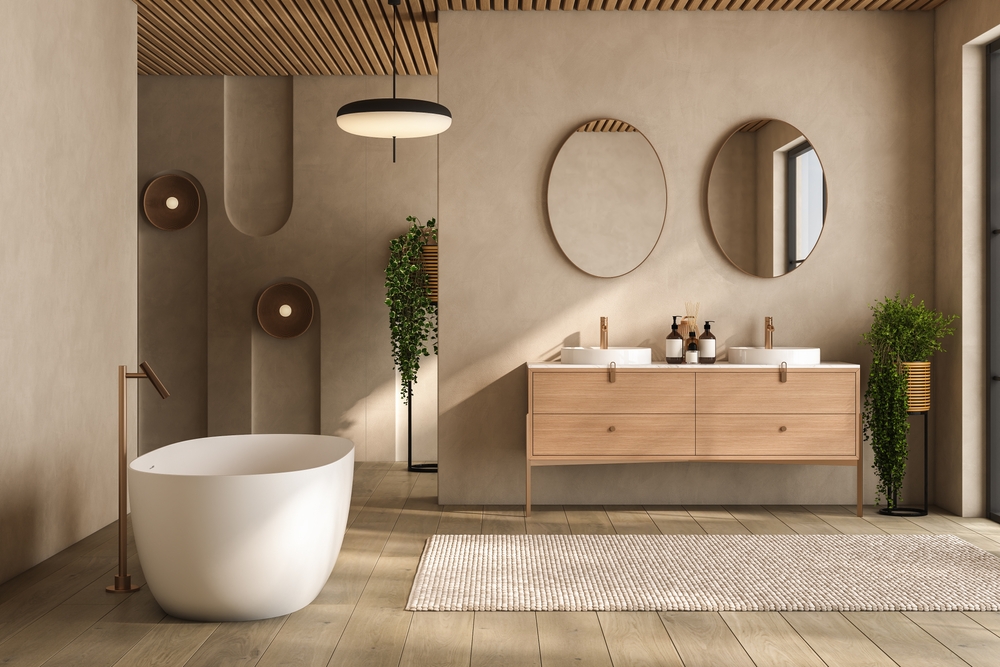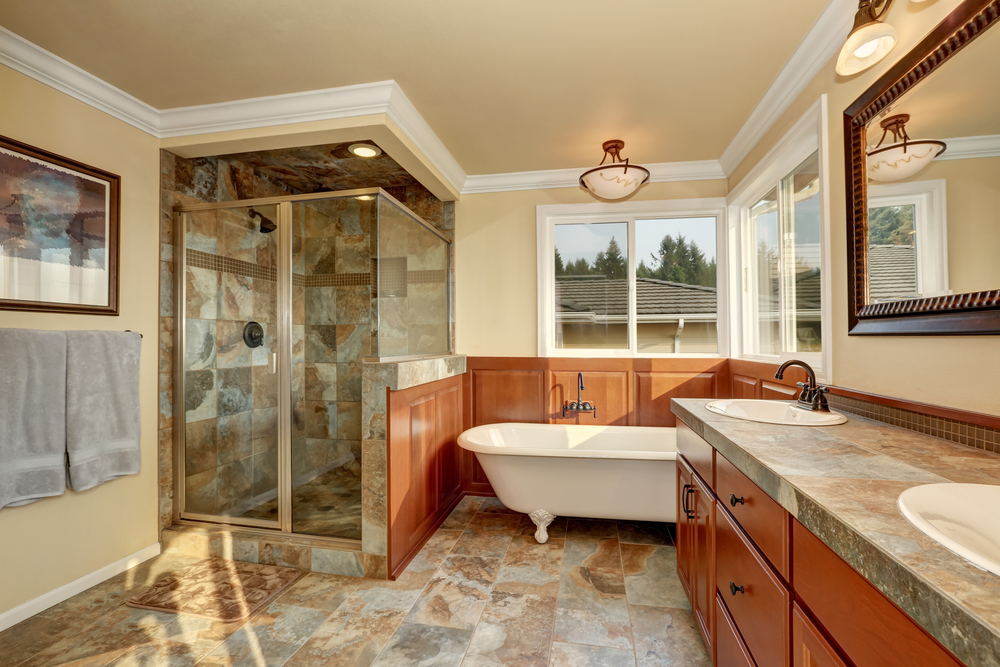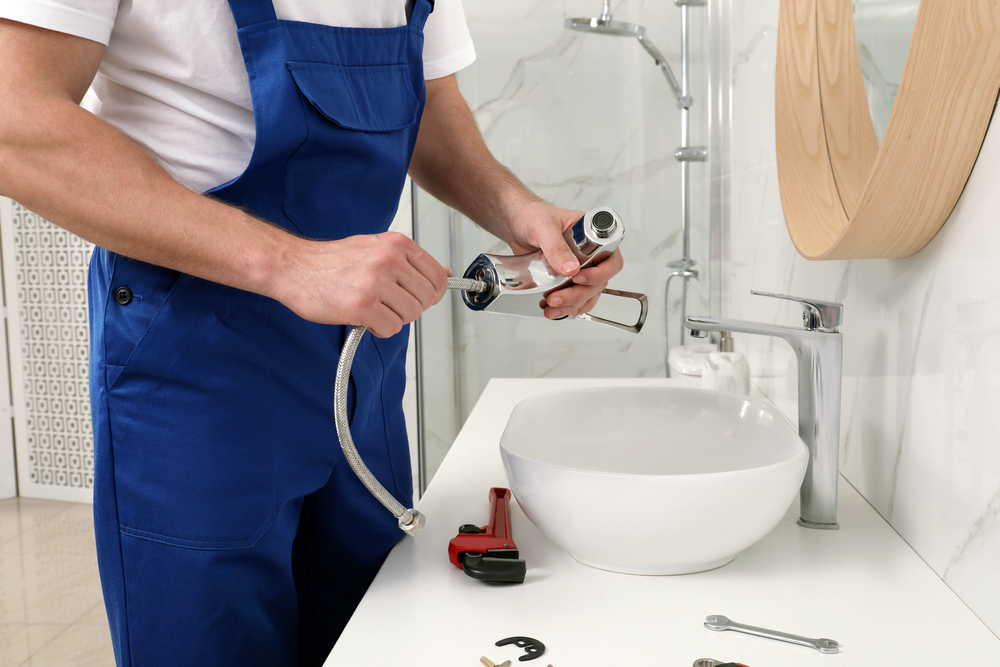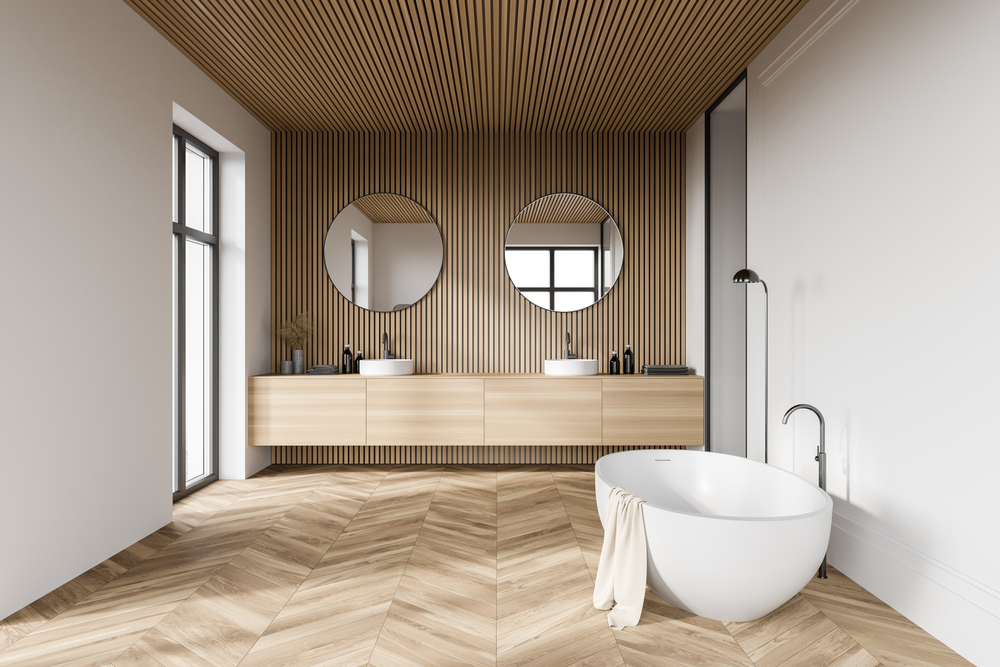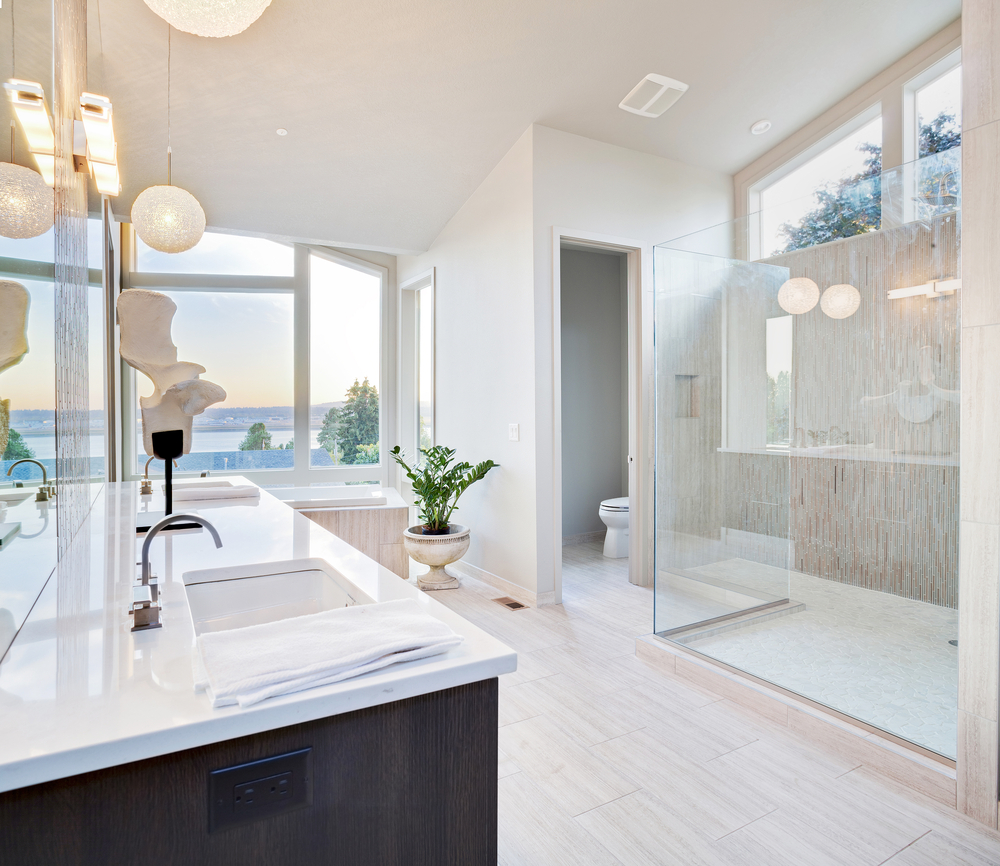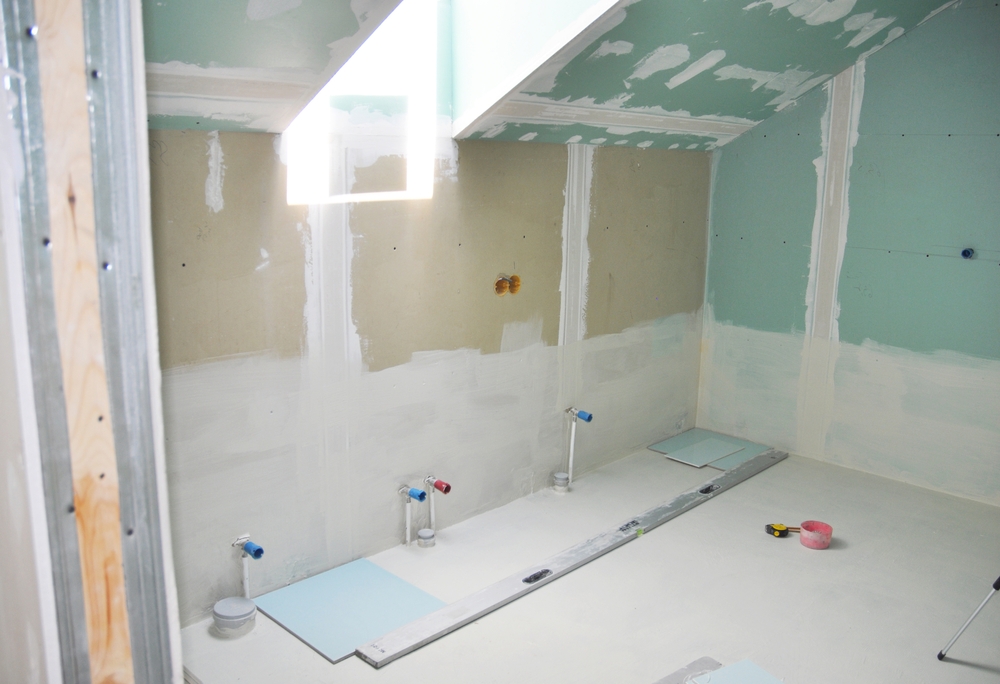
Protecting Your Vancouver WA Bathroom From Leaks and Mold
Living in the Pacific Northwest means embracing our beautiful, lush environment, but it also means dealing with a lot of moisture. For homeowners in Vancouver, WA, this climate poses a unique challenge inside the home, especially in the bathroom. This room is constantly exposed to water and steam, making it a prime target for moisture-related issues. Proper bathroom waterproofing and moisture control aren’t just renovation buzzwords; they are essential for protecting the health of your family and the structural integrity of your home.
Without effective measures, constant humidity and water exposure can lead to serious problems. The most common risk is the growth of mold and mildew, which can cause respiratory issues and other health concerns. Beyond health, moisture can seep into your walls, floors, and subfloors, causing wood to rot, materials to warp, and structures to weaken. These issues often go unnoticed until significant damage is done, leading to expensive and extensive repairs down the line. Investing in professional waterproofing from the start is the best defense against these long-term costs and headaches.
Understanding Moisture Risks in Vancouver WA Bathrooms
To effectively protect your bathroom, you first need to understand where the moisture comes from and how our local climate amplifies the risk. Recognizing the early warning signs can help you take action before small issues become major disasters.
Common Sources of Moisture
Your bathroom is designed for water use, but that same design can create moisture problems if not managed correctly. Everyday activities are the primary culprits. Showers and baths release vast amounts of steam, which settles on every surface. Splashes from tubs and sinks can find their way into unsealed gaps. Even the toilet can produce condensation on its tank. Compounding these issues are hidden threats like slow plumbing leaks behind walls or under sinks, which can release water for months before being discovered. Without a robust system to manage this moisture, your bathroom is under constant threat.
Effects of PNW Climate
The climate in Vancouver, WA, and the broader Pacific Northwest creates the perfect storm for moisture problems. Our region is known for its high humidity and frequent rainfall, which means the air both inside and outside your home carries more moisture. During cooler, rainy months, this dampness makes it harder for the air in your bathroom to dry out naturally. This persistent damp environment accelerates the growth of mold and mildew and increases the likelihood that water will penetrate building materials. Proper PNW bathroom leak prevention is therefore not a luxury, but a necessity.
Signs Your Bathroom Needs Waterproofing
Your bathroom will often give you clues that it has a moisture problem. It’s important to know what to look for so you can address the issue promptly. Keep an eye out for these common warning signs:
- Visible Mold or Mildew: Black, green, or pink spots growing on walls, ceilings, or in grout lines are a clear sign of excess moisture.
- Musty Odors: A persistent earthy or damp smell, even after cleaning, often indicates hidden mold or mildew growth behind walls or under floors.
- Water Stains: Discoloration or dark patches on ceilings (especially below an upstairs bathroom) or walls are red flags for leaks.
- Warped or Peeling Surfaces: Moisture can cause paint to bubble, wallpaper to peel, and wood trim or flooring to warp and buckle.
- Damaged Grout: Grout that is cracked, crumbling, or perpetually dark and damp is no longer providing a seal against water.
- Soft Spots: Spongy or soft spots in the floor around the shower, tub, or toilet suggest the subfloor is saturated with water and may be rotting.
Waterproofing Techniques and Best Practices
Modern waterproofing involves a multi-layered system that works together to keep your bathroom dry, safe, and durable. A professional approach goes far beyond just choosing a good tile. It requires a comprehensive strategy implemented by experienced contractors.
Membranes and Sealants
The first line of defense is an impermeable barrier applied behind your tile and below your flooring. These membranes prevent any water that gets past the tile and grout from reaching the structural components of your home. There are several types:
- Liquid-Applied Membranes: These are painted or rolled onto surfaces like a thick paint, creating a seamless, flexible, and waterproof layer. They are excellent for complex shapes and shower niches.
- Sheet Membranes: These are large, pliable sheets made of materials like modified polyethylene that are installed on walls and floors. They offer a consistent thickness and are highly effective in large, flat areas.
- Hybrid Systems: Some modern solutions combine the benefits of both, using specialized boards with built-in waterproofing that are sealed at the seams.
For bathroom waterproofing in Vancouver WA, selecting the right membrane for each application—showers, floors, and tub surrounds—is critical for complete protection.
Tiling and Grout Considerations
While tile itself is highly water-resistant, the grout lines between them are porous and can absorb water. Proper installation is key. The surface must be sloped correctly to guide water toward the drain, preventing it from pooling. Using a high-performance, water-resistant grout is a must, as it resists staining, mold, and water absorption better than traditional cement-based grout. Finally, all joints and corners—where walls meet floors or other walls—must be sealed with flexible, waterproof caulk or sealant to accommodate slight movements in the structure without cracking.
Shower Pan Installation and Drainage
The shower floor, or shower pan, is the area that handles the most water, and its installation is one of the most critical aspects of bathroom waterproofing. A properly constructed shower pan involves multiple layers: a pre-sloped mortar bed, a waterproof liner that runs up the walls a few inches, and a final mortar bed on top, which is also sloped precisely toward the drain. This multi-layer system ensures that any water that penetrates the tile and top mortar bed is caught by the liner and safely channeled to the drain, offering robust PNW bathroom leak prevention.
Wall and Subfloor Protection
The materials behind your beautiful new tile are just as important as the tile itself. Standard drywall will disintegrate when exposed to moisture. That’s why building codes require the use of moisture-resistant materials in wet areas.
- Moisture-Resistant Drywall (Green Board): This is a step up from standard drywall but is only suitable for damp areas, not truly wet ones like inside a shower.
- Cement Backer Board: This is the standard for tiled walls and floors. It’s a stable, durable substrate that will not rot, swell, or break down when it gets wet.
- Vapor Barriers: In some cases, a plastic vapor barrier is installed behind the backer board to prevent moisture from reaching the wall studs.
Ventilation & Humidity Control
Waterproofing stops water from getting in, but ventilation gets it out. Removing moist, steamy air is a crucial part of any moisture control strategy and is essential for mold prevention in bathrooms.
Proper Exhaust Fan Placement and Capacity
An exhaust fan is your bathroom’s most important tool for fighting humidity. However, not all fans are created equal. It needs to be the right size for your bathroom, measured in CFM (cubic feet per minute). A fan that is too small won’t be able to clear the air effectively. For best results, the fan should be placed directly over or very near the shower, where the most steam is produced. It should also be vented directly outside—never into an attic or wall cavity, as this simply moves the moisture problem elsewhere in your home.
Windows and Natural Ventilation
If your bathroom has a window, use it. Opening a window during or after a shower is a simple, no-cost way to vent steam and bring in fresh, dry air. Even cracking it open a little can make a big difference, especially on less humid days. In the PNW, this may be less practical during the rainy season, but it’s a great option whenever the weather permits. Ensure the window frame and sill are well-sealed to prevent water intrusion from the outside.
Smart Ventilation Solutions
Technology offers new ways to make ventilation effortless and more effective. Smart fans equipped with humidity sensors (or “humidi-stats”) automatically turn on when they detect a rise in humidity and turn off once the air is dry. This removes the guesswork and ensures the fan runs for exactly as long as needed. Some systems can even be controlled via a smartphone app, giving you complete control over your bathroom’s environment.
Maintenance Tips to Prevent Moisture Damage
A professionally waterproofed and ventilated bathroom is built to last, but regular maintenance is key to ensuring it performs as designed for years to come.
Regular Inspections for Leaks and Mold
At least twice a year, perform a thorough visual inspection of your bathroom. Look for any signs of trouble: check the caulk in corners and around fixtures for cracks or gaps. Inspect grout for any crumbling or dark spots. Look under sinks and around the base of the toilet for any signs of water. Catching a small issue early can save you from a major repair.
Cleaning and Sealing Tile and Grout
Regular cleaning not only keeps your bathroom looking great but also helps prevent mold and mildew from taking hold. Depending on the type of grout used, it may need to be resealed every year or two. Sealing fills the pores in the grout, making it more resistant to water and stains. This is a simple DIY task that provides a critical layer of protection.
Checking and Maintaining Fans and Ventilation Systems
Your exhaust fan can’t do its job if it’s clogged with dust and debris. At least once a year, turn off the power to the fan and clean the grille. You may also need to vacuum dust from the fan motor and blades. While you’re at it, confirm that the fan is still exhausting air effectively by holding a piece of tissue paper up to the grille—it should be held firmly in place by the suction.
Local Considerations for Vancouver WA Homes
Building a bathroom that can withstand the PNW climate requires local expertise. This includes knowledge of regional building codes, access to licensed professionals, and an understanding of which materials perform best in our damp environment.
Building Codes and Permits
Any significant bathroom remodel in Vancouver requires adherence to building codes set by Clark County and the state of Washington. These codes specify minimum requirements for waterproofing, ventilation, plumbing, and electrical work to ensure the safety and durability of the construction. Failing to follow these codes or secure the necessary permits can result in fines, failed inspections, and problems when you eventually sell your home.
Working With Licensed Contractors
The best way to ensure your project is up to code and built to last is to partner with a licensed, insured, and experienced contractor like Clean Cut Renovations. A professional contractor understands the specific challenges of our climate and knows the best techniques and materials for bathroom waterproofing in Vancouver, WA. They handle the permits, manage the project, and ensure every detail, from the shower pan to the exhaust fan, is installed correctly for a worry-free result.
Material Selection for PNW Climate
Choosing materials that are designed to resist moisture is crucial. Porcelain tile is an excellent choice for floors and walls as it is less porous than ceramic. High-performance epoxy or urethane grouts offer superior water and stain resistance. For vanities and cabinets, consider solid wood, thermofoil, or other water-resistant materials over standard particleboard. Investing in quality fixtures and finishes designed for wet environments will ensure your bathroom remains beautiful and functional for years.
Ensuring Long-Lasting Bathrooms in Vancouver WA
A beautiful bathroom is a great investment in your home, but a beautiful, dry, and healthy bathroom is an investment in your peace of mind. In Vancouver, WA, effective moisture control is the foundation of any successful bathroom remodel. It involves a complete system of professional waterproofing membranes, proper tiling and sealing, powerful ventilation, and diligent maintenance.
By understanding the risks posed by our PNW climate and taking a proactive approach, you can protect your home from water damage, prevent mold growth, and ensure your new bathroom remains a safe and enjoyable space for decades.
Don’t leave the health and safety of your home to chance. Partner with the local experts at Clean Cut Renovations. We specialize in custom, high-end bathroom remodels built to withstand the unique demands of the Pacific Northwest. Contact us today to discuss how we can create a safe, beautiful, and code-compliant bathroom for your home.

